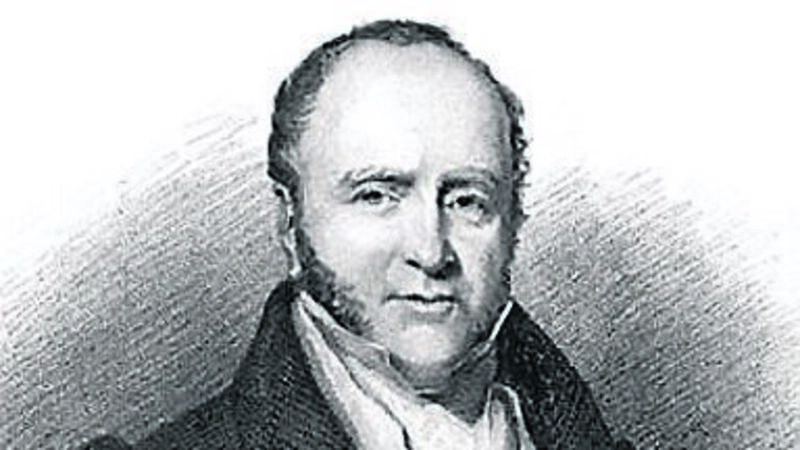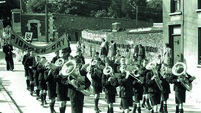Did you hear about the time a volcano wrecked Kinsale? Or the fella who almost wiped out Bandon?

PIONEER: Cork-born George Bennett, who founded the town of Bandon in Oregon, USA - and almost destroyed it!
IT was a sad day for Kinsale, when a volcano erupted and lava wiped it off the map.

******
WHEN Bandon man made good George Bennett founded a new town in Oregon, USA, he naturally named it after his birthplace.
However, he went to his grave without realising that his own folly almost led to the U.S Bandon being obliterated from the map.
Bennett’s mistake was to introduce gorse from his native West Cork, which spread rapidly across the western state, becoming a nuisance to local landowners.
In 1936, long after his death, this highly flammable gorse helped fuel a large wildfire that almost wiped out Bandon. At least 10 people died and only a handful of buildings were left standing. Its 2,000 defiant inhabitants decided to stay put and rebuild it.

A resident said later: “That Irish hedge was the worst thing, when the fire hit it right across from my house, the flames shot up high into the air. It was just as though there had been gasoline poured on the fire.” The gorse still blooms in the Oregon area but is closely regulated.
Bennett was born in Bandon, Co. Cork, in 1827, and married in 1853. In 1873, he and his sons sailed to a new life in the U.S, leaving behind his wife and daughter. The Corkman, said to have made his fortune in the gold rush, founded the town of Bandon in 1875.
He served as its Justice of the Peace and as official observer for the U.S Weather Bureau. Bennett also wrote histories of both Bandons, and dabbled in poetry.
In Canada in the 19th century, immigrants from the Rebel County established a residential area in Toronto called Corktown, which mushroomed around the breweries and brickyards that provided work for them.
Not to be outdone, America also boasts a Corktown, on the west of Detroit, Michigan (right). The oldest neighbourhood in motor city, in the 1800s Irish people were the largest ethnic group here and the majority came from Cork.
The city’s St Patrick’s Day parade starts at the United Irish Plaza in Corktown, a memorial to those who settled here in the 19th century. Today, Corktown is at the heart of a billion dollar Henry Ford campus, no better place for it as the man himself had strong Cork roots.
In Ontario, Canada, you will find a Kinsale, near Oshawa. It was settled from the 1700s by folk from the Cork town. The Ontario one has a golf course, but it surely can’t boast the same breathtaking views as the Old Head!
There is another Kinsale in the scenic historic district of Westmoreland County, Virginia, USA. Sitting on the banks of the Yeocomico River, its bandstand’s brass plaque reads ‘Kinsale Virginia 1706 - Ceann Saile Eire’.
Fermoy is a rural area just south of Ottawa, Canada, settled in the 1800s by Cork exiles, while you will also find a rural Fermoy in Wayne County, Pennsylvania. Over in Minnesota, Fermoy is the name of a locality in Saint Louis County which served as an important junction on the Great Northern Railway.

A Bantry can also be found in Alberta, Canada, near Tilebrook Provincial Park, while the famous fishing destination of Timko Lake is home to the Bantry Reservoir.
There is another Bantry Bay, at Garigal National Park, New South Wales, Australia. It was promoted as a tourism spot with ferry routes in the late 19th century.
The Bantry in McHenry County, North Dakota, was founded in 1905 by Irish settlers, and the population peaked in 1920, when 315 people lived there. In 2019, Bantry was dissolved. Today its population is just six, and it has the air of a ghost town, with many of the old buildings forming an eerie time capsule.
Under the red skies of Arizona, you will find Cork, but this area of the U.S south-west has been long deprived of life since those first 19th century hardy settlers from Leeside.
Cork is also the name of a townland in Butts County, Georgia, a strategic site in the American Civil War, where Colonel Kilpatrick assembled his Union troops in 1864.
Located in New Brunswick, Canada, is the rural community of New Bandon, named by those who came from the ‘old’ Bandon in West Cork. New Bandon became a base for grindstone production from the 19th century until World War II, thus providing immigrants with employment.
Cloyne is a rural farming station in Queensland, Australia, where sheep outnumber humans, while on the other side of the world, Cloyne village sits on Highway 41 in Ontario, Canada. The area was first settled in the 19th century by Irish people, mostly from Cork, and when a post office opened there in 1859, the village of Cloyne quickly developed around it. Today the Pioneer Museum tells the tale of Cloyne, Ontario, and its first settlers.
In South Africa, Blarney can be found in the coastal region of KwaZulu-Natal, while Baltimore is a small rural town in Windsor County, Vermont. Its picture postcard setting under Hawks Mountain convinced West Cork emigrants to live here in the 19th century.
Charleville, a rural town in Queensland, Australia, sits on the Warrego River. The first Irish here settled in 1847. William Alcock Tully, Surveyor General of Queensland, laid out the streets and named it after the North Cork town, even though he was a Dub! When Charleville railway station (left) opened here in 1888, it connected it to other parts of Australia.
Another Cork town found in Queensland is Glanmire, in an industrial urban area in the Gympie Region. The Bruce Highway runs through it, while the riverside reserve offers a rest point for those passing through.
Skibbereen is a townland in Newfoundland, and its rugged coast could easily be mistaken for West Cork. The area maintains a strong Irish identity through its local songs, customs, and the soft, lilting accents, which have a distinctly Corkonian tone.
So, no matter where you may find yourself in the world, you are never too far from home!
This article appeared in the 2023 Holly Bough. The 2024 Holly Bough is now on sale and can be purchased here.







